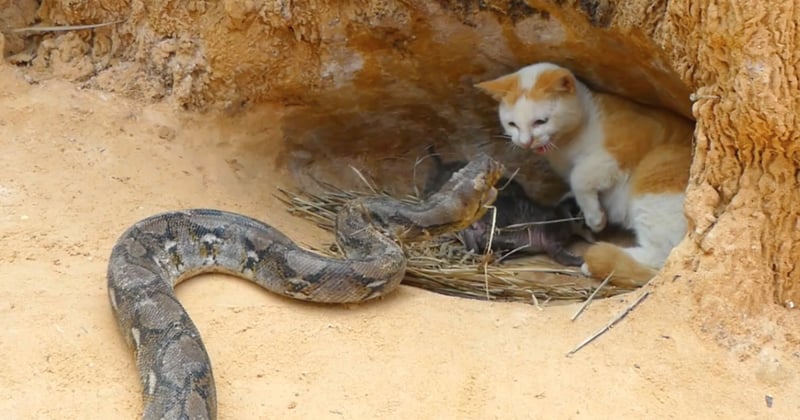
How to spot a fake animal rescue video
News
There is a worrying new craze on YouTube – the rise of videos depicting fake animal rescues.
In these videos, an animal, such as a monkey, dog or reptile, is filmed to be the ‘prey’ and is set upon by a large ‘predator’, such as a snake or crocodile. This cruelty is set-up and inflicted just for entertainment.
Animals included in some of these fake rescues include domesticated animals such as chickens, ducks, puppies, and cats, and several predator animals, that are wild, all exploited for entertainment and profit.
Here are five ways to spot a fake animal rescue video:
- Look for any obvious signs of physical injury or harm such as cuts, wounds and clipped wings, or behaviours that might imply the animal is stressed or in fear – this could be panting or cowering for example. This is something that might be spotted on either predator or prey before the ‘attack’.
- Check if the predator or prey animals are in settings that you would not usually expect to find them under normal circumstances, such as a forest species out in open scrubland.
- See if the predator or prey animals demonstrate any atypical behaviour during the ‘attack’, such as snakes loosely coiled around prey, or the predators responding in a timid way when the human intervenes with no attempt at escaping.
- When looking at multiple videos posted by the same channel, see if it appears as though the same animal and or habitat locations are being used repeatedly. You can see this sometimes by looking out for the same markings or patterns on the animals, or the same hole in the ground.
- Observe if the human ‘rescuer’ responds inappropriately once the predator and prey have been separated. This could be holding the animals roughly in two separate hands, but then present them closely to each other, or carry them away together rather than keeping them a safe distance apart.
World Animal Protection is urging YouTube to fulfil its public pledge made in March 2021 and act quickly to review and remove videos that depict this type of horrific animal abuse.
The longer these types of clips stay online, the more people view them and the greater the risk they will spawn copycats elsewhere.
YouTube must step up their responsibility and publicly share their plans to proactively prevent this type of cruel content from being uploaded in the first place.
[1] YouTube’s guidelines explicitly list the following as prohibited: ‘Content where there's infliction of unnecessary suffering or harm deliberately causing an animal distress’ and ‘Content where animals are encouraged or coerced to fight by humans’ - https://support.google.com/youtube/answer/2802008?hl=en&ref_topic=9282436
YouTube must step up their responsibility and publicly share their plans to proactively prevent this type of cruel content from being uploaded in the first place